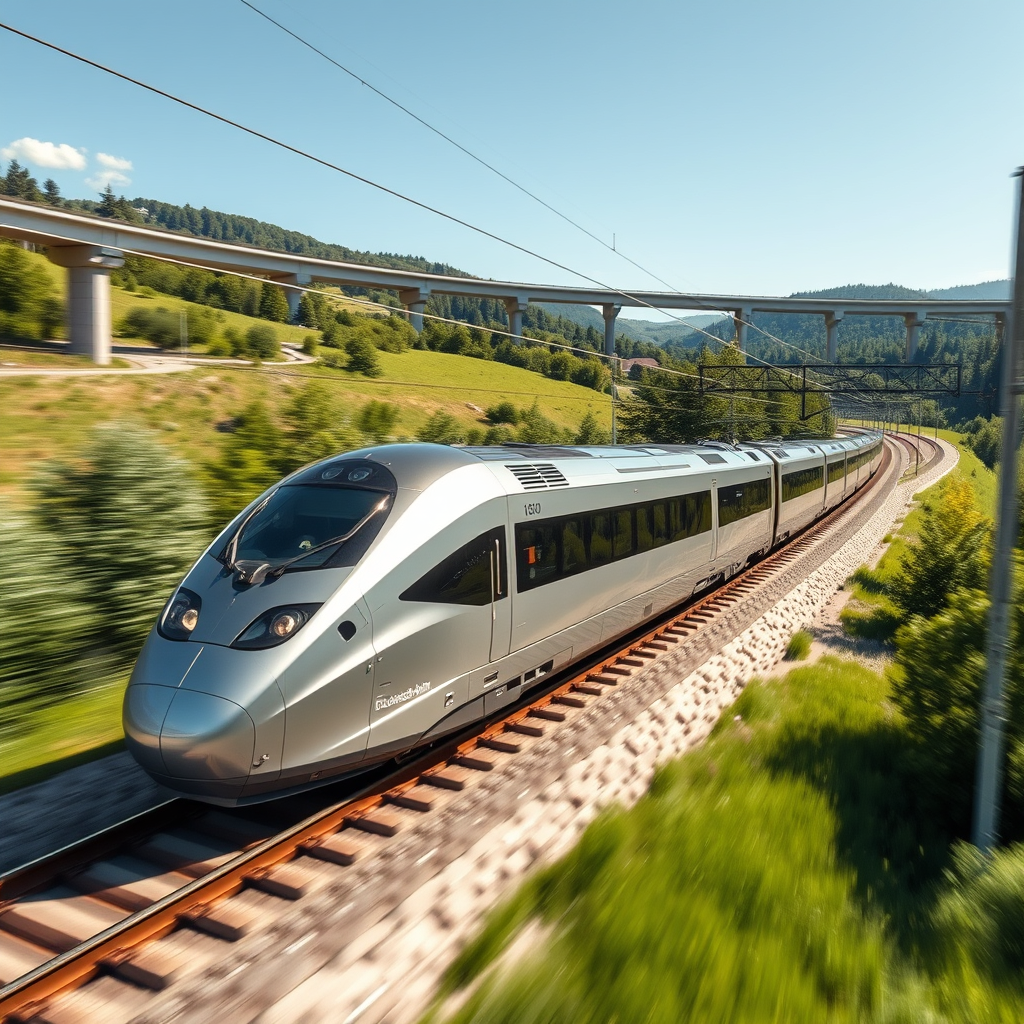DB’s €850M Hanover-Würzburg Rail Line Renewal

Major High-Speed Line Renewal: Deutsche Bahn’s Hanover-Würzburg Project
This article examines the recently completed €850 million, five-year renovation project undertaken by Deutsche Bahn (DB) (German Railways) on the high-speed rail line connecting Hanover and Würzburg. This extensive undertaking involved a comprehensive overhaul of the 327km line, highlighting the significant investment and logistical challenges inherent in maintaining and modernizing crucial railway infrastructure. The project serves as a case study for large-scale railway renewal projects, illustrating best practices and the complexities involved in balancing operational needs with essential infrastructure upgrades. We will explore the scope of the project, the challenges encountered, the employed methodologies, and the broader implications for the German railway network and future modernization strategies. The project’s successful completion underscores the critical role of substantial investment in ensuring the long-term reliability and efficiency of high-speed rail systems.
Project Scope and Methodology
The Hanover-Würzburg high-speed line renovation encompassed a wide range of activities. The project involved the renewal of 557km of track, including the replacement of approximately 700,000 sleepers and 235 switches. A significant portion of the work focused on the rehabilitation of existing infrastructure, with repairs carried out on 49 bridges and 63 tunnels. The Rauheberg tunnel received particular attention, undergoing a complete refurbishment. This phased approach, starting in June 2019 with the Hanover to Göttingen section and concluding with the Kassel-Fulda section, minimized disruption to passenger and freight services while allowing for thorough and effective completion of the various tasks. The project’s phased implementation showcases a strategic approach to managing large-scale infrastructure projects, balancing the need for comprehensive renewal with the necessity to maintain operational railway functionality.
Addressing Infrastructure Challenges
The age and intensity of use of the Hanover-Würzburg line presented various challenges. Deterioration of the trackbed, sleepers, and switches necessitated extensive replacements. Similarly, the bridges and tunnels, integral components of the high-speed line, required significant attention due to wear and tear and the potential safety implications of deferred maintenance. The comprehensive nature of the repairs, including subsurface stabilization, underscores the importance of addressing both surface-level issues and underlying problems that could compromise long-term stability and safety. The logistical complexities of managing such a large-scale project, coordinating work across multiple sections of the line while maintaining partial operational capabilities, highlight the need for meticulous planning and execution.
Economic and Operational Implications
The €850 million investment represents a significant commitment to enhancing the German railway network. The improved reliability and efficiency resulting from the renovation will directly benefit both passenger and freight transport. Reduced maintenance requirements and improved operational performance translate into long-term cost savings. Moreover, the project’s completion sets a precedent for future large-scale infrastructure projects, offering valuable lessons learned in terms of project management, resource allocation, and stakeholder engagement. The successful completion of the Hanover-Würzburg renovation strengthens the overall resilience and capacity of the German rail network, bolstering its role in sustainable transportation.
Future Modernization Strategies and the Frankfurt-Mannheim Project
The Hanover-Würzburg project’s completion precedes DB’s next major modernization initiative on the Frankfurt-Mannheim line. This project will trial a novel five-month complete line closure method, aiming to condense years of phased work into a more concentrated timeframe. This new approach represents a shift toward more efficient and impactful renewal strategies. The lessons learned from the Hanover-Würzburg project, coupled with the innovative approach planned for the Frankfurt-Mannheim line, will significantly influence future railway modernization strategies in Germany and potentially serve as a model for similar projects globally. The planned €16.4 billion infrastructure program, including the renewal of an additional 2,000km of track and the renovation of 1,000 stations, demonstrates DB’s continued commitment to upgrading its infrastructure.
Conclusions
The Deutsche Bahn’s €850 million renovation of the Hanover-Würzburg high-speed line stands as a testament to the substantial investment required to maintain and enhance critical railway infrastructure. The project’s success, encompassing the renewal of 557km of track, the replacement of hundreds of thousands of sleepers and switches, and the repair of numerous bridges and tunnels, showcases a methodical approach to large-scale infrastructure projects. The phased methodology minimized disruption while ensuring thorough repairs. The project’s impact extends beyond immediate improvements; it demonstrates a commitment to long-term operational efficiency and safety. The lessons learned, particularly in managing complex logistical challenges and coordinating work across multiple sections of a busy line, inform future modernization strategies. The upcoming Frankfurt-Mannheim project, employing a more intensive, albeit shorter, complete closure method, represents a potential evolution in railway renovation techniques. This commitment to continuous improvement and substantial investment underlines the crucial role of well-maintained railway infrastructure in supporting a reliable, efficient, and sustainable transportation system for Germany and beyond. The success of the Hanover-Würzburg project serves as a model for similar large-scale infrastructure renewal projects worldwide, highlighting the importance of strategic planning, meticulous execution, and significant financial investment in ensuring the long-term viability and safety of high-speed rail networks.


